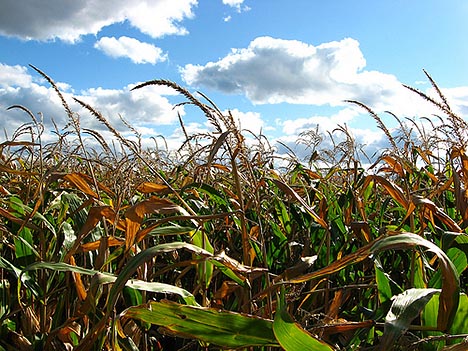Genetically modified foods(GM foods) or biotech foods are foods gotten from genetically modified organisms (GMOs), such as genetically modified crops. GMOs have had particular alterations introduced into their DNA via genetic engineering methods. Other ways by which humans modify food organisms include selective plant breeding and animal breeding. Most western countries like the United States of America (U.S.A) have utilised GMOs to sustain their growing population. Africa, with the exception of countries like South Africa, is yet to still make use of GMOs as a way of combating the growing food shortage on the continent.
The commercial sale of GM foods commenced in 1994. The transgenic Flavr Savr tomato was approved by the US Department of Food and Drug Administration (FDA) for marketing in the U.S.A. The GM alteration in the tomato allowed for a delay in ripening after picking. Some transgenic crops like Bacillus thuringiensis (Bt) corn/maize (Ciba-Geigy), canola with modified oil composition (Calgene), cotton resistant to the herbicide bromoxynil (Calgene), Bt potatoes (Monsanto), Bt cotton (Monsanto), soybeans resistant to the herbicide glyphosate (Monsanto), virus-resistant squash (Asgrow), and Monsanto, also received marketing approval in the US in 1995. In 2000, with the growing and GM alteration of golden rice, scientists genetically modified food to improve its nutrient content for the first time. Additionally papaya has been genetically modified to fight against the ringspot virus. According to the New York Times, Hawaii’s papaya industry was facing disaster in the early 1990s because of the deadly papaya ringspot virus. Its single-handed savior was a breed engineered to be resistant to the virus. Without it, the state’s papaya industry would have collapsed.
Maize also known as corn, in the U.S.A, constitutes a staple food in many regions of the world including Africa. Grown since 1997 in the Canada and the U.S.A, 86% of maize from the U.S.A was genetically modified in 2010 and 32% of the worldwide maize crop was GM in 2011. In 2011, 49% of the total maize harvest was utilised for livestock feed, including the percentage from distillers grains, 27% went to ethanol production, 13% was exported, 4.1% of corn harvest from the U.S.A was made into high fructose corn syrup, and the rest was utilized for other sweeteners, cornstarch, making alcohol for beverages, for cereal, and for seed. This means that less than 10% of the harvest was utilized for human food or drink.
There is indeed regulation of GMO especially in Western states. These governments assess and manage the risks related with the utilization of GMOs and genetic engineering technology. The regulation methods of GMOs differ in countries, with some of the most marked differences occurring between Europe and the U.S.A. In these Western states, regulation depends on the intended purpose of the products of the genetic engineering. For instance, a crop not intended for food utilization is generally not reviewed by authorities such as the FDA responsible for food safety, while the FDA or related organizations in other Western states, review GM crops intended to be utilized by human beings or for animal food production. The importation of GM products is also regulated by these Western states.
As of 2012, the U.S.A leads a list of multiple countries in the production of GM crops, and 25 GM crops had received regulatory approval to be grown commercially. Despite this record and yet no calamity related to GM food use, there has been a lot of criticisms against GMOs. Many criticize GM foods on several grounds, including ecological concerns, safety issues and economic concerns. These critics argue that GM plants, as well as potential GM animals to be used as food sources, are subject to intellectual property law.
The reality is that African states, especially countries in the Sahel zone are faced with a food shortage crisis. Despite this imminent danger to humanity, countries especially in the Sahel of Africa like Mauritania remain reluctant to opening their doors to the utilization of GM food and products. Countries like South Africa have opened their doors to GM food production and other products, and such moves are helping to curb hunger not only in South Africa, but also in the Southern African region.
It is therefore germane for African states, especially in the Sahel region grossly plagued by the global food crisis to open their doors to the utilization of GM food and products. The U.S.A and other European nations have been long involved in the production and commercialization of GM food and products, and there is yet to be a calamity. Curbing the global food shortage can be made possible especially in Africa by embracing the production of GMOs. This definitely would entail bringing onboard specialized scientists and food technologists to ensure that such products are fit for human consumption.
Chofor Che is an associate of AfricanLiberty.org and an integral part of the Voice of Liberty initiative. He is also a Doctoral Law candidate at the Community Law Centre, University of the Western Cape and blogs at http://choforche.wordpress.com/ . He is grateful for ideas for this article from medical physicists, Chofor George, Mark Choforand Marius Chofor.


